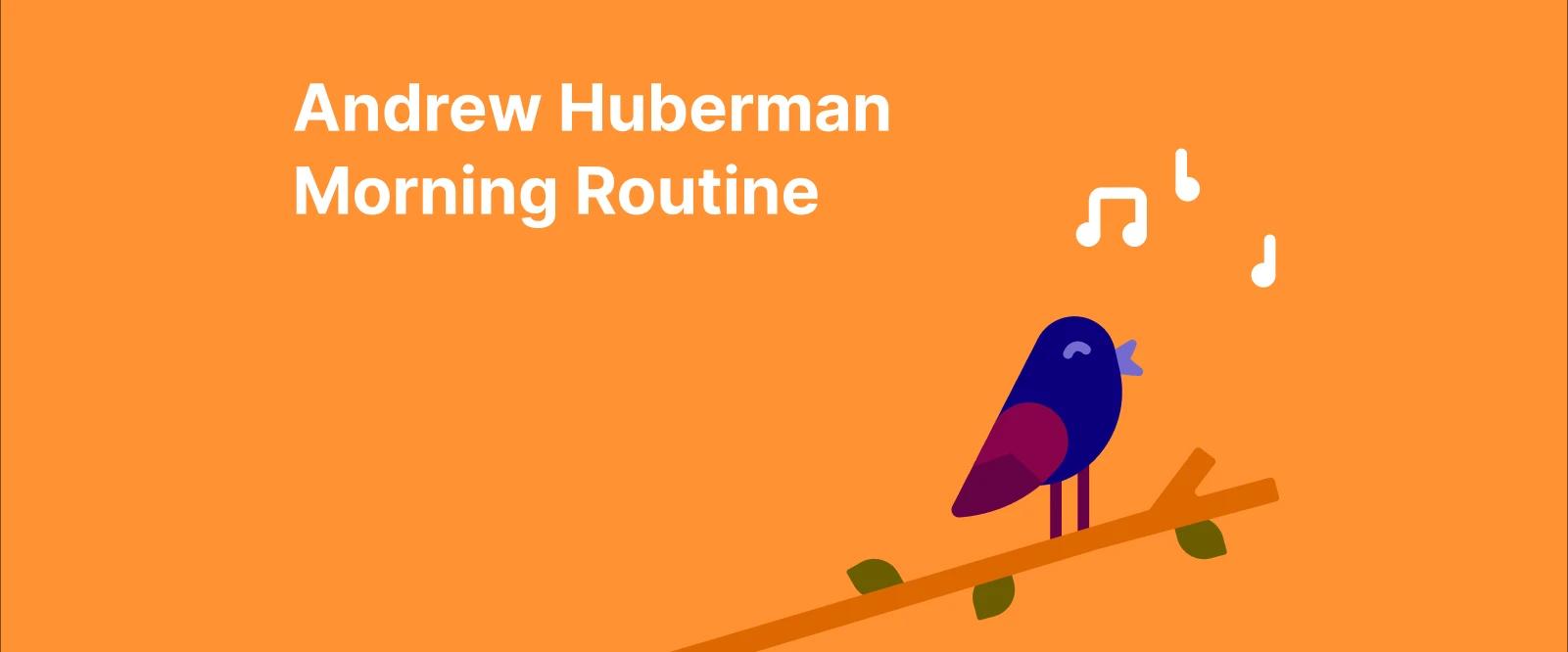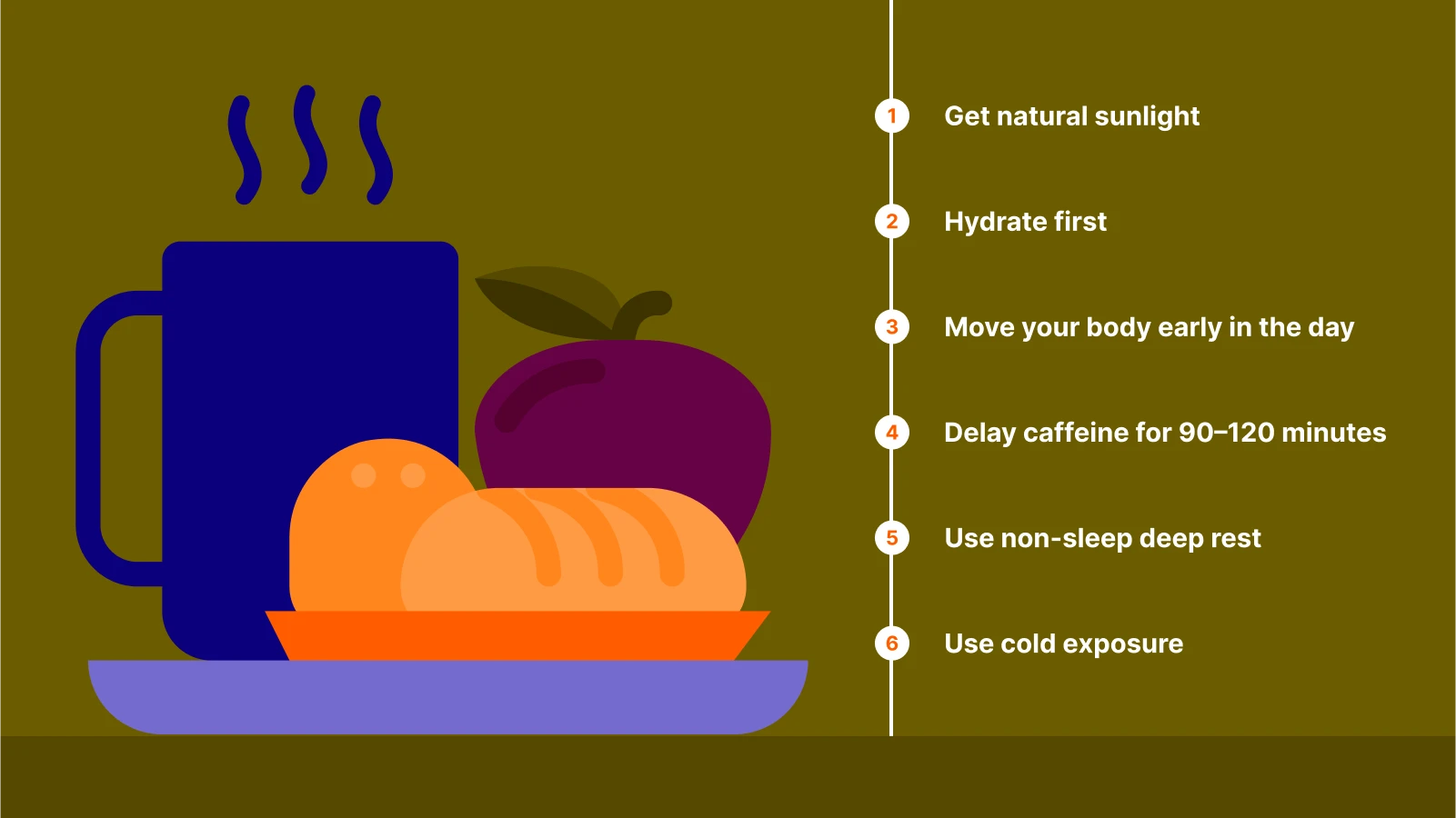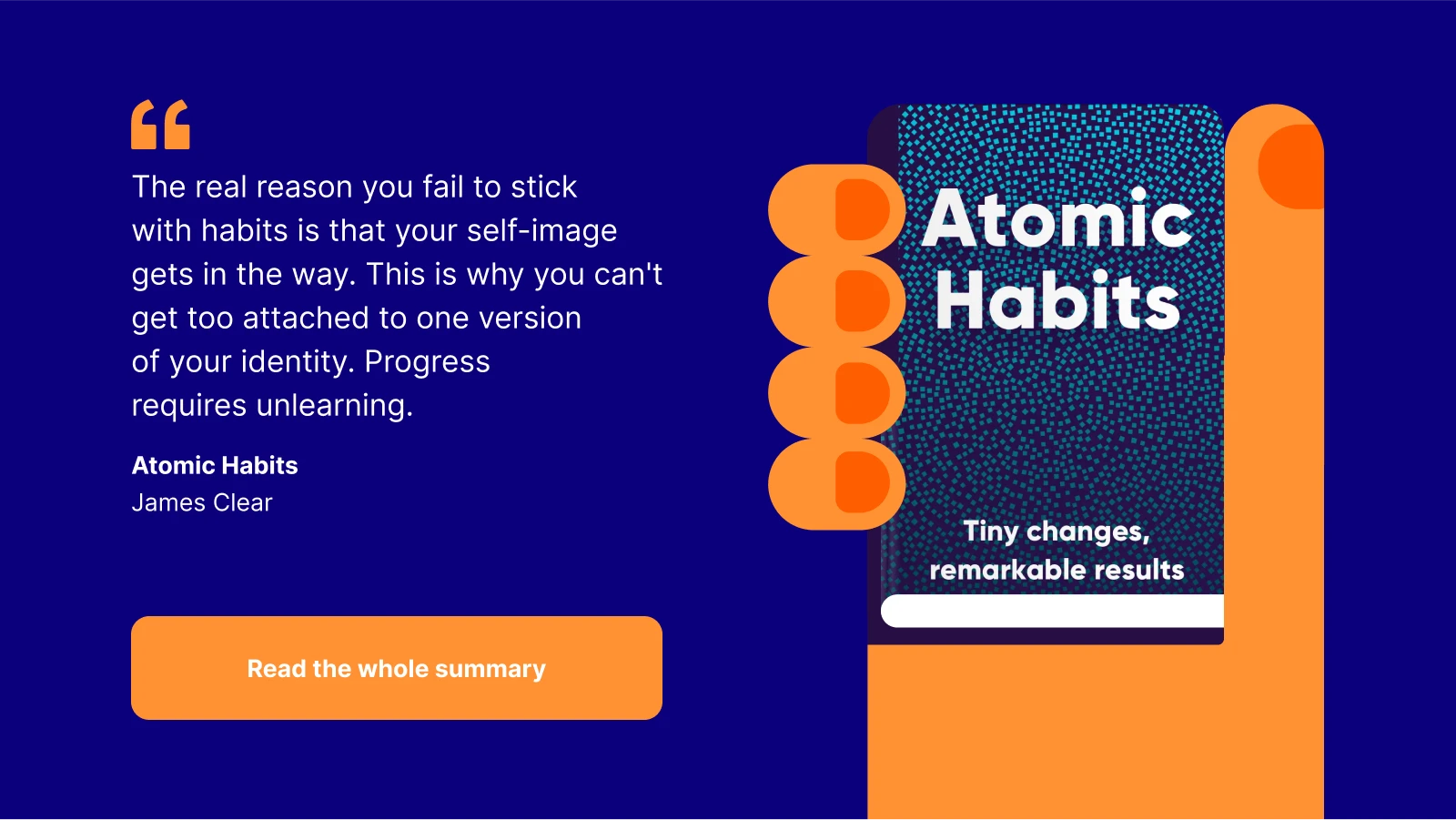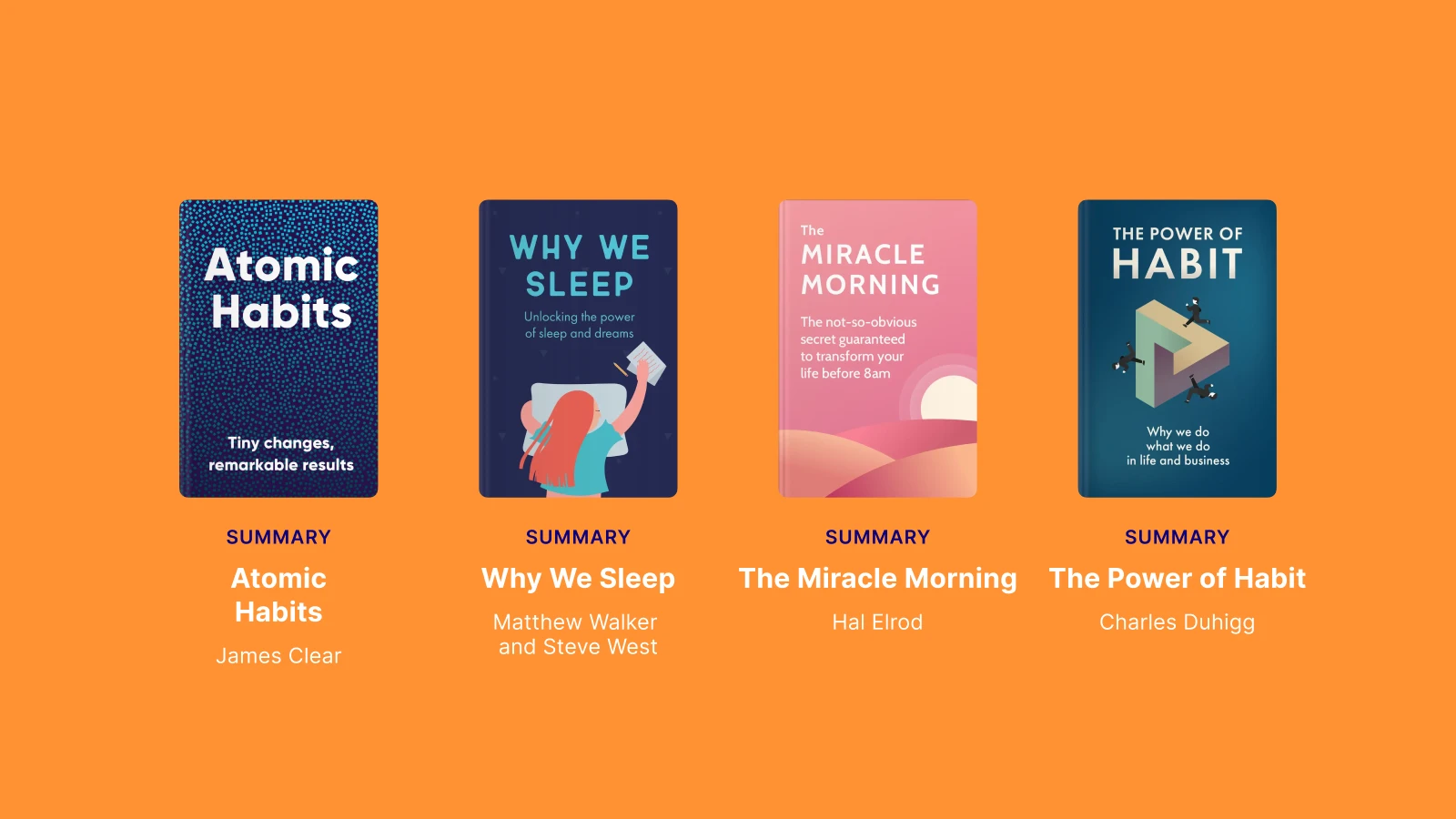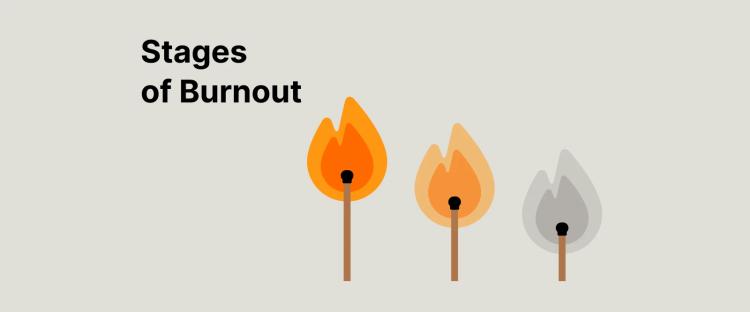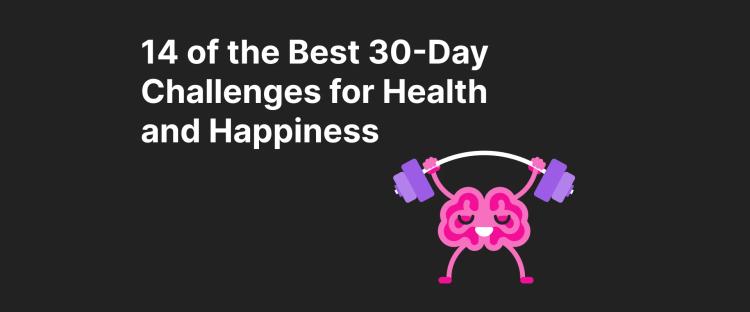Start your day on the right note! While many struggle with morning grogginess and difficulty focusing, picture waking up feeling alert and energized. Neuroscientist Dr. Andrew Huberman shares a science-backed routine that helps you seize the day and stay productive. Let's explore how to start enjoying its benefits starting tomorrow.
What's Andrew Huberman's morning routine? (Quick overview)
Dr. Andrew Huberman's morning routine uses science-based practices to strengthen mental and physical wellness and provide energy for the day ahead.
As a dedicated neuroscientist, Huberman's primary scientific pursuits focus on the link between the mind and brain and how it shapes daily life. His optimal early morning routine equips your body for a productive workday by syncing your actions with your surroundings:
Get natural light: Expose yourself to sunlight soon after waking.
Hydrate first: Drink water with electrolytes to rehydrate your body.
Move your body: Engage in light exercise like walking or stretching.
Time your caffeine: Wait 90–120 minutes before your first coffee.
Take a mental break: Use a short relaxation technique like Non-Sleep Deep Rest (NSDR).
Try cold exposure: Take a quick cold shower or a cold plunge.
This overview offers the essential structure of the Huberman Lab morning protocol. Sections below will explain the precise actions and applicable mechanisms that make this regimen so effective.
Huberman-inspired morning habits: A neuro-optimized way to start your day in steps
Starting your morning off right sets the tone for the rest of your day. Follow the neuroscientist's "morning sunlight blueprint" to boost your alertness, lift your mood, and sharpen your thinking.
Step 1: Get natural sunlight within 30–60 minutes of getting out of bed
Get sunlight soon after waking to maintain a healthy internal clock. Timing depends on current weather conditions.
| Weather | Guidelines for light exposure |
|---|---|
On a sunny day | Enjoy 5–10 minutes in the sun without sunglasses |
On a partially cloudy day | Go outside for 10–15 minutes when the skies are clear |
On a cloudy, rainy day | Spend 20–30 minutes out or inside under the 10,000-lux SAD lamp light |
Step 2: Hydrate first
When you wake up, rehydrate with 16-32 ounces of water with electrolytes, like sea salt, as Dr. Huberman recommends for more energy and better digestion. You may add lemon juice or apple cider vinegar for potassium, calcium, and magnesium.
Step 3: Move your body early in the day
Walking, jogging, or light calisthenics "encourages" your body by raising alertness and your core temperature. Aim to finish your morning workout within one to three hours after waking to reduce sluggishness and maximize your focus.
Step 4: Delay caffeine for 90–120 minutes to boost alertness
Cortisol rises in early hours, shoring up your alertness; caffeine blocks adenosine, but having it too early disrupts cortisol, possibly causing an afternoon crash. Delaying caffeine intake lets cortisol peak, protecting your sleep quality and heart rate.
Step 5: Use non-sleep deep rest to clear your mind
NSDR offers quick mental benefits as an alternative to meditation, helping to reset a stressed mind. Techniques like Yoga Nidra, guided imagery, and physiological sighs — taking a deep breath, a short inhale, and a full exhale repeated 2–3 times — calm the nervous system.
Step 6: Use cold exposure to build resilience
Cold hydrotherapy — just 11 minutes a week in 3–5 minute showers or baths — can improve metabolism, increase blood circulation, reduce inflammation, and activate the sympathetic nervous system for better overall health.
Visual breakdown of Huberman's morning routine and its proven benefits
| № | Step | Key action | Core benefit |
|---|---|---|---|
1 | Get natural sunlight | Spend 5 to 30 minutes outside in natural light within 30 to 60 minutes after waking up | Sets your body's internal clock, lifts your mood, keeps you alert, and triggers a peak in cortisol levels |
2 | Hydrate before anything else | Drink 16–32 oz of water with electrolytes right away | This helps replenish fluids, improves body functions, and aids digestion |
3 | Move your body early | Do light physical activity for the new day workout: cardio, walking, or calisthenics | This raises your body temperature, helps you focus, and reduces tiredness |
4 | Delay caffeine | Wait 90–120 minutes after waking before having caffeine | This allows your natural cortisol to peak, clears out adenosine, and prevents an energy crash later |
5 | Use a Non-Sleep Deep Rest technique | NSDR suggests a deep relaxation without sleep. Spend 10–30 minutes on Yoga Nidra or practice physiological sighs | NSDR will alleviate your stress, and focusing on work will become easier; even if you still have a sleep debt, your mind will get a reset |
6 | Expose yourself to cold | Take a cold shower, dive, or sprinkle yourself with cold water for 3–5 minutes | Your alertness and energy levels will go up; an inflammation in your body will subside; your mental resilience will magnify |
Why it works: The science behind the morning routine from Dr. Andrew Huberman
Huberman's optimal set of "rituals" is effective because it is rooted in how our brains and bodies function. Each step targets specific body systems, helping improve our mental and physical performance.
1. Resetting your circadian rhythm: Daylight aligns your body's 24-hour bio-clock and helps you sleep better, upgrading your metabolism, energy, and immune health.
2. Regulating morning hormones: A natural light and movement regimen helps manage cortisol, adrenaline, and mood for an alert, caffeine-free start.
3. Timing coffee for lasting energy: Wait 90–120 minutes after waking to drink coffee for steadier energy & wakefulness, better sleep, and reduced grogginess.
4. Balancing dopamine for focus: A "low-dopamine morning" avoids early phone use and tech stimulation. Light, hydration, and simple actions level up mental clarity.
Want to explore science further?
Our Headway's mission is to inspire you by summarizing key neuroscience and habit-building books in just minutes.
Match your rhythm: Andrew Huberman's morning routine for night owls, shift workers, and busy parents
Huberman's routine may not suit everyone, but key habits — morning light, hydration, movement, and timing — can benefit most people. Start small with "atomic" habits to create an optimal morning routine that supports your body and mind.
For night owls: Morning starts when you decide it
Gradually reschedule your waking hours to ensure at least 15–30 minutes of natural light exposure after waking. This will reset your body clock and unlock "a secret door" to a deeper, more restful sleep.
For shift workers: Stay systematic
If your schedule is irregular, use these strategies:
Same shift schedule: Opt for the same shift for at least two full weeks to alleviate cognitive function issues.
Strategic light exposure: Use bright light during work to stay alert, block light when resting, and get sunset light to help reset your body clock.
Intermittent fasting: Eat all your meals within a 10-hour window to balance your biorhythms. Consult your doctor about supplements and carbs.
These strategic methods and instruments will prep your body for shift work.
For busy parents: Defy "unpredictable" schedule
Busy parents have unpredictable schedules and little to no personal time. As an alternative, focus on flexibility and key tasks.
Prioritize key steps: Concentrate on essential activities like getting natural light and staying hydrated; minimize social media use. Even a quick 5–10 minute walk outside can do wonders.
Incorporate new habits into your daily routine: Drink water while making your first meal, do quick stretches with your kids, and delay caffeine until after school drop-off.
Flexibility over perfection: Accept that not every day will go as planned. Aim for consistency; add parts of the plan, like specific workouts, one by one.
NSDR for quick resets: Use simple breathing techniques or quiet moments during nap time to reduce stress.
Huberman's guide suggests that each person's internal clock may differ from standard clock time, so "the start of the day hours" might also vary.
Can you do the Andrew Huberman morning routine if you wake up at noon?
Yes! Huberman's morning hacks work at any wake-up time. Get natural light, hydrate, delay caffeine 90–120 minutes, and move early to start your active day.
Sum-up of Dr. Huberman's wake-up protocol: Your personalized regimen
| Lifestyle | Common challenge | Huberman's principle | Practical adaptation |
|---|---|---|---|
Night owls | Waking up later in the morning | Get outside to see natural light and align with your body's clock | Gradually adjust your wake-up time by 15 to 30 minutes, and seek outdoor light as soon as possible |
Shift workers | Irregular schedules disrupt sleep | Follow a consistent schedule (light exposure & time-restricted eating) | Stick to a pre-decided work shift for 14 days, use bright light while working, keep the space dark for sleep, and eat within a 10-hour window |
Busy parents | Unpredictable schedules and inflexible personal time | Assign priorities, form small habits, try NSDR (Non-Sleep Deep Rest) | Prioritize: light and hydration; small movements and deep rest; flexibility over perfection |
Peak performance morning habits: Tools to get you started (self-check quiz, habit tracker, sunlight calculator)
First attempts to make a schedule habitual are rarely easy. However, using practical tools and strategies to build good habits can help you stick to your designated hours and achieve long-term success.
How close is your morning to Dr. Andrew Huberman's routine? Let's find out!
Printable habit tracker
Tracking behaviors is essential for behavior change. In his monumental 'Atomic Habits,' James Clear highlights that tools like checklists and sticker charts motivate self-work.
"The real reason you fail to stick with habits is that your self-image gets in the way. This is why you can't get too attached to one version of your identity. Progress requires unlearning."
By visually marking each completed step, you receive immediate positive feedback, reinforcing the behavior. Use this downloadable PDF tracker to track your daily habits and monitor your progress visually. Interactive features improve personalization and ease the adoption process.
Your sunlight timing calculator
Light exposure is key for health, and a sunlight timing calculator can optimize it by wake time and location. Apps like SunSeek track light levels and set goals based on Huberman's 'temperature minimum' — about two hours before your usual wake-up.
Physical and digital tools like that simplify habit formation and contribute to lasting behavior changes.
Top books to learn and apply Huberman lab–inspired morning practices
Dr. Andrew Huberman bases his ideas on sleep science, neuroscience, and behavioral psychology. Headway provides short summaries of relevant books that help you understand the routine's main ideas and improve your self-care awareness.
'Atomic Habits' by James Clear
The bestselling book, 'Atomic Habits' by James Clear, is a must-read for following the Huberman routine. The author outlines the "four laws of behavior change": make it obvious, attractive, easy, and satisfying.
"Habits are the compound interest of self-improvement."
Building habits that resonate with your true self is akin to preparing for retirement while you are still young and energetic.
'Why We Sleep' by Matthew Walker
In ' Why We Sleep,' Dr. Matthew Walker explains sleep's crucial role in health, supporting Huberman's advice on light exposure and keeping up with our natural sleep-wake cycle for better well-being and reasoning mechanisms.
"Our lack of sleep is a slow form of self-euthanasia."
When we neglect sleep as a priority, our body clocks begin to malfunction.
'The Miracle Morning' by Hal Elrod
While Huberman's routine targets physical health, Hal Elrod's 'The Miracle Morning' highlights people's mental acuity, getting them ready to tackle their goals by 8 am. The author offers the S.A.V.E.R.S. method, consisting of Silence, Affirmations, Visualization, Exercise, Reading, and Scribing elements.
"There is nothing to fear, because you cannot fail — only learn, grow, and become better than you've ever been before. Our outer world will always be a reflection of our inner world."
Elrod's book broadens the concept of a productive morning, emphasizing its physical, mental, and intellectual pros.
'The Power of Habit' by Charles Duhigg
Habits operate in the brain through a "habit loop" consisting of cue, routine, and reward, as explained in Charles Duhigg's 'The Power of Habit.' The author emphasizes the "golden rule of habit change": maintain the same cues and rewards but alter the habitual patterns.
"Rather, to change a habit, you must keep the old cue, and deliver the old reward, but insert a new routine. If you believe you can change — if you make it a habit — the change becomes real."
Duhigg outlines Huberman's suggestions and links them to brain functions and behavioral changes.
Headway transforms these powerful reads into easy-to-digest summaries, enabling readers to apply knowledge immediately. Get full access to these and more in the Headway app.
Why you should try the Andrew Huberman's morning routine today: Start your day like a neuroscientist with Headway
Stop just reading about a better life — start living it. Andrew Huberman's morning routine offers a way to start your day with purpose; as a result, you'll gain a sharper focus, a more positive mood, and feel less sleepy as you go through your morning.
Small, consistent steps can shift your day from reactive to proactive, boosting brain health and personal effectiveness.
If your schedule is somewhat inflexible, you might find Huberman's "daybreak guidelines" and similar insights on time management and personal development from other experts particularly helpful. Start your upgraded regimen today to work toward a more energized and fulfilling life.
FAQs about Andrew Huberman's morning routine
Who is Andrew Huberman?
Andrew Huberman is an associate professor at Stanford University. He hosts the Huberman Lab Podcast on neuroscience and mental health.
Can you follow the routine on cloudy days?
Yes, you can. The light outdoors is generally brighter than indoors, so aim for about 10 minutes outside on partly cloudy days. If it's very foggy or raining, stay out for 20–30 minutes.
How long should cold exposure last?
Dr. Andrew Huberman advises 11 minutes of weekly cold exposure in short sessions, like 3–5 minute cold showers or immersion. Begin with brief periods and gradually extend.
Can you drink coffee before exercise?
Dr. Huberman advises waiting 90–120 minutes before caffeine to manage adenosine. Caffeine boosts early workout performance, but avoid it immediately after waking to prevent afternoon fatigue.
What about bright lights and exercise if you can't get outside?
When outdoor time is limited, use natural light to boost your mood and focus; if not possible, use artificial light for 10-15 minutes. Huberman suggests exercising 3-5 times a week for 60 minutes to improve mood, motivation, fitness, and mental health.

